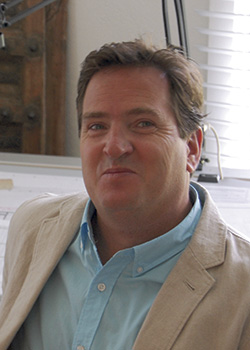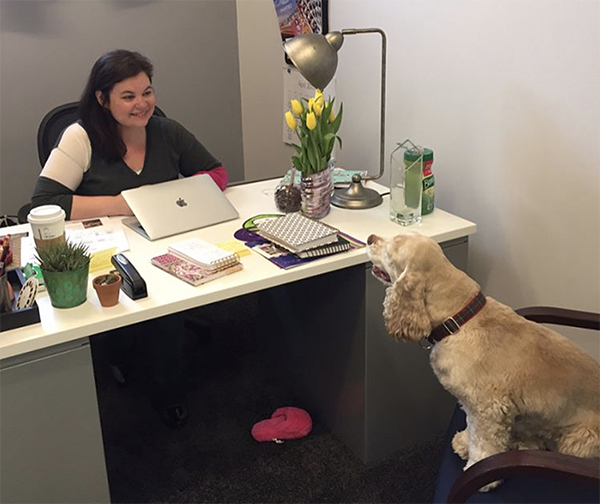“You don’t know how to design anything! You need to just sit down and listen and maybe you will learn something.” This was the opening salvo in what eventually became a good relationship with the creator of two highly successful restaurant chains during our first meeting.
 Andy Simpson,
Andy Simpson,
Results Thru StrategyPart of why I love the hospitality business as much as I do is the opportunity to work with people who have turned their passions and ideas into places that entertain people. In dealing with these visionary entrepreneurs and founders, I’ve discovered that each of them has some special talent that sets them apart. As a designer and development consultant, I view it as my job to zero in on that talent and help them focus it. Yet working with them can sometimes be a challenge – founders can be a real handful for those charged with bringing their vision to life.
Everyone has heard stories about what it was like to work with Steve Jobs. Many found him impossible. Those who were able to get through the famous “reality distortion field” and have productive working relationships had to make that happen by getting around his rough edges. Amazing ideas live underneath the forbidding exterior. Whether you are a consultant or working as a member of the design and development team in a company led by a challenging founder, you have to develop a way to get under that exterior, make the relationship work and actually enjoy the ride.
For starters, there is some great advice about being a consultant in “Getting Naked: A Business Fable about Shedding the Three Fears that Sabotage Client Loyalty,” by Patrick Lencioni that is equally valuable to restaurant executives. I can’t write about being a consultant without touching on the principles I learned from Patrick, but I’d like to add some of my own advice about succeeding with some of the more creative and challenging types of entrepreneurs that we restaurant design and development folks deal with.
Develop a very thick skin. There is no question that in dealing with visionaries you often have to let a lot of shots bounce off your armor. Many innovative entrepreneurs and concept creators have become accustomed to dealing with people who can’t keep up or don’t quite “get” what they’re really trying to do. As a test, they tend to throw out some stuff to see who can take it. I actually look forward to being tested like this. If you have a good sense of humor, you can often turn a shot across the bow into an opportunity to break down some walls. The reality is that it may actually be your patience that’s being tested, but they don’t seem to view it that way. If you take the barbs personally you will never be able to get to their creative, and often insightful, vison.
Be willing to disagree. Successful restaurateurs got to where they are for some very good reasons, but that doesn’t mean they’re always right. Many concept creators have a tendency to surround themselves with people who agree with them. That may happen because they drive other people away or because they don’t realize that what they need is someone willing to challenge their assertions. In the military, they have the junior officers go first (from lowest rank on up) when commenting on a plan or strategy to avoid the tendency for people to agree with the senior officer. I have found this to be very useful when talking about a design or conducting an idea session with a group of people who work for a charismatic leader. If you explain to them in advance how to conduct these meetings, they usually embrace the idea and are willing to go along. It often means you have to take the lead in situations where the working group may otherwise have waited to first hear what the chief had to say.
Be willing to speak the truth. Telling the truth when a client or executive may not want to hear it can put the relationship at risk. This can be tough to do. If you’re a consultant, you have to shed the fear of losing business and income. Being willing to speak the truth can, indeed, cause you to lose the work. But keep in mind that what your clients want most is to know that you are more interested in helping them than you are in maintaining an income stream. That advice is directly from “Getting Naked” and I consider it the single best piece of advice I’ve received. As one of my partners always says, we are often in a position where we have to “tell someone their kids are ugly.” Doing so in an honest way lets you maintain your integrity, and ultimately can create lasting relationships that are built on trust.
Never say never! As a general rule, never say anything is impossible, even when someone poses an idea that sounds completely impossible. When a client or executive on a project requests something that sounds like it would be crazy expensive or just not feasible, bite your tongue. Instead of saying it can’t be done or commenting on the potential cost, do some probing. Ask questions about what it is they are after. What are they hoping guests will feel as a result of this approach or design idea, or how do they see this contributing to the guest experience? How does this support what the brand stands for? Listening to what’s behind the vision can help you come up with alternative ways to accomplish what they are after. I find that people rarely start out with why they think an idea is important and in some cases they haven’t even thought it through until you ask them. It takes asking some questions and digging to find what they are really hoping to accomplish.
Be a problem solver. The best thing about working with or for someone who has innovative vision is figuring out what they are really good at and helping them execute it in ways they haven’t thought of or couldn’t get done before. Often, the Steve Jobs of the world have a pretty tough time getting their vision to reality. Some are tired of being told so often that things can’t be done that they develop a caustic approach. For others, the difficulty is that what they want to do seems too expensive to make the financial model work. This usually results in a lot of head-butting with financial backers and everyone loses. The innovator gets bored and frustrated and the magic is watered down or lost completely.
Being able to listen carefully to what is behind the vision and come up with alternate ways of achieving it makes you the hero (even if the client doesn’t actually pin that label on you). Listen carefully to why they want to do something and make yourself an invaluable resource by figuring out how to make it happen.
As design and development executives or consultants helping grow brands with visionary founders, it’s our job to get to the fire and magic that can make the brand successful, helping to turn it into a reality that can meet the economic needs of the shareholders and help provide a path for growth. Doing so may not always be easy, but it sure is a lot of fun.



